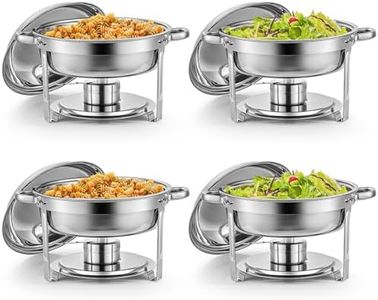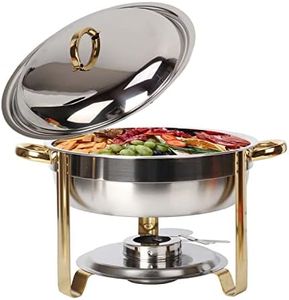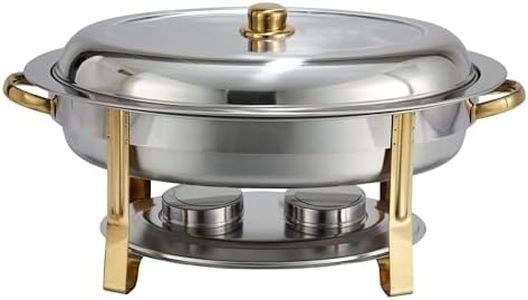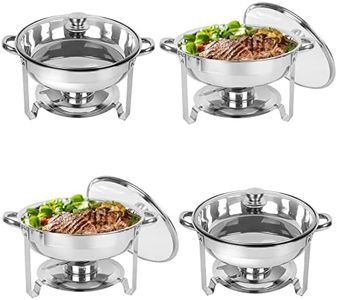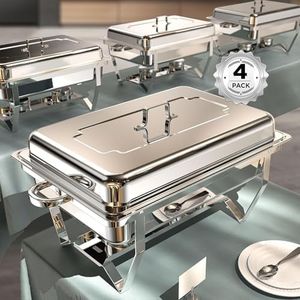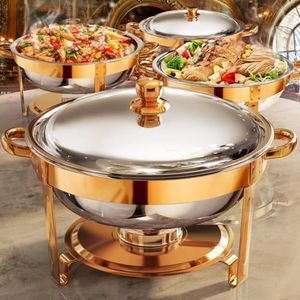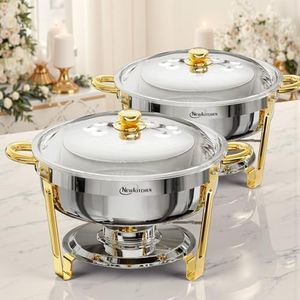We Use CookiesWe use cookies to enhance the security, performance,
functionality and for analytical and promotional activities. By continuing to browse this site you
are agreeing to our privacy policy
10 Best Chafing Dishes
From leading brands and best sellers available on the web.Buying Guide for the Best Chafing Dishes
Picking the right chafing dish is about ensuring your food stays warm and presentable when serving guests, whether at parties, buffets, or events. The best chafing dish is one that matches your hosting style, the quantity of food you typically serve, and the setting where you’ll use it. Understanding the main specifications will help you get a chafing dish that’s easy to use, maintains safe food temperatures, and fits both your space and serving needs.CapacityCapacity tells you how much food the chafing dish can hold, usually measured in quarts or liters. This is important because it determines how many people you can serve before needing to refill, making it vital for smooth service. Small chafing dishes (about 2-4 quarts) are suitable for side dishes, sauces, or small gatherings. Medium ones (5-7 quarts) work well for modest-sized parties, while large chafing dishes (8-9 quarts or more) are best for big events or main courses. Choose based on the typical group size you host and the type of dishes you want to keep warm.
MaterialChafing dishes are made of materials such as stainless steel, aluminum, or occasionally glass and ceramic inserts. The material affects heat retention, durability, and how easy it is to clean. Stainless steel is the most common because it’s sturdy, rust-resistant, and looks professional. Aluminum may be lighter and cheaper but may not hold heat as well. Glass and ceramic are often used only for inner trays to prevent reactions with certain foods. Choose a material based on the look you want and how often you expect to use the dish, with stainless steel being best for frequent, durable, and reliable use.
ShapeThe shape of a chafing dish influences the types of foods you can serve and the presentation. Popular shapes include rectangular (good for entrees and large portions), round (best for soups, stews, or side dishes), and oval (often used for roasts). Your choice should reflect the foods you usually serve and your table setup. Rectangular models maximize space on buffet tables, while round or oval options suit smaller items and appetizers. Pick a shape that suits your menu and serving space.
Heating SourceChafing dishes typically use fuel burners (like gel or wick) placed underneath, or occasionally electric heating. Gel fuel is portable and doesn’t need power, making it great for outdoor or mobile events, while electric versions offer even heat and convenience where outlets are available. The heating source matters for safety, refilling, and ease of temperature control. Choose based on where you’ll serve food—if you need flexibility, go with gel or wick; for indoor and consistent temperature, an electric one may be more suitable.
Lid TypeThe type of lid impacts ease of serving and heat retention. Options include roll-top lids (which stay open in any position), lift-off lids (fully removable, less common for self-serve), and hinged lids (open partway and close easily). Roll-top and hinged lids are ideal for buffets and ease of use, while lift-off lids might be preferable for smaller settings or when staff is serving. Your choice should match how you plan to serve guests and how often the dish will be opened and closed.
Ease of CleaningHow easy a chafing dish is to clean will influence how much you enjoy using it. Look for features such as removable food pans, dishwasher-safe components, and minimal crevices or seams where food can get trapped. If you plan to use the chafing dish often, easy cleaning is key to saving time and maintaining hygiene. Consider how much effort you want to put into cleaning, and check if the components are friendly for your preferred cleaning method.
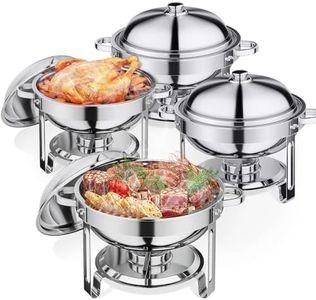
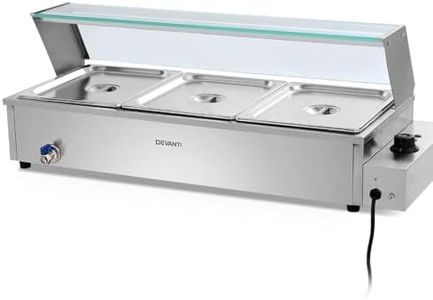
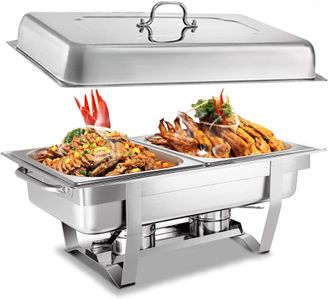

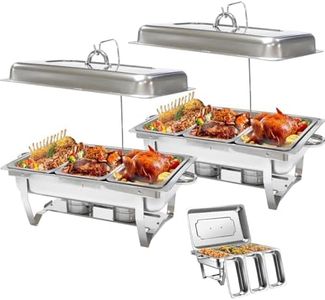

![Chafing Dishes for Buffet 4 Pack, 6QT [Worry-Free Assemble] Food Warmers for Parties Buffet [Elegant Gold and Silver Colors] Stainless Steel Round Chafing Dish Buffet Set with Complete Set](https://images-proxy.bestreviews.guide/aFLHSbdmHcd09h_DacKmdeF6_rY=/0x300/https://m.media-amazon.com/images/I/516PB3S2YBL._AC_CX679_.jpg)
